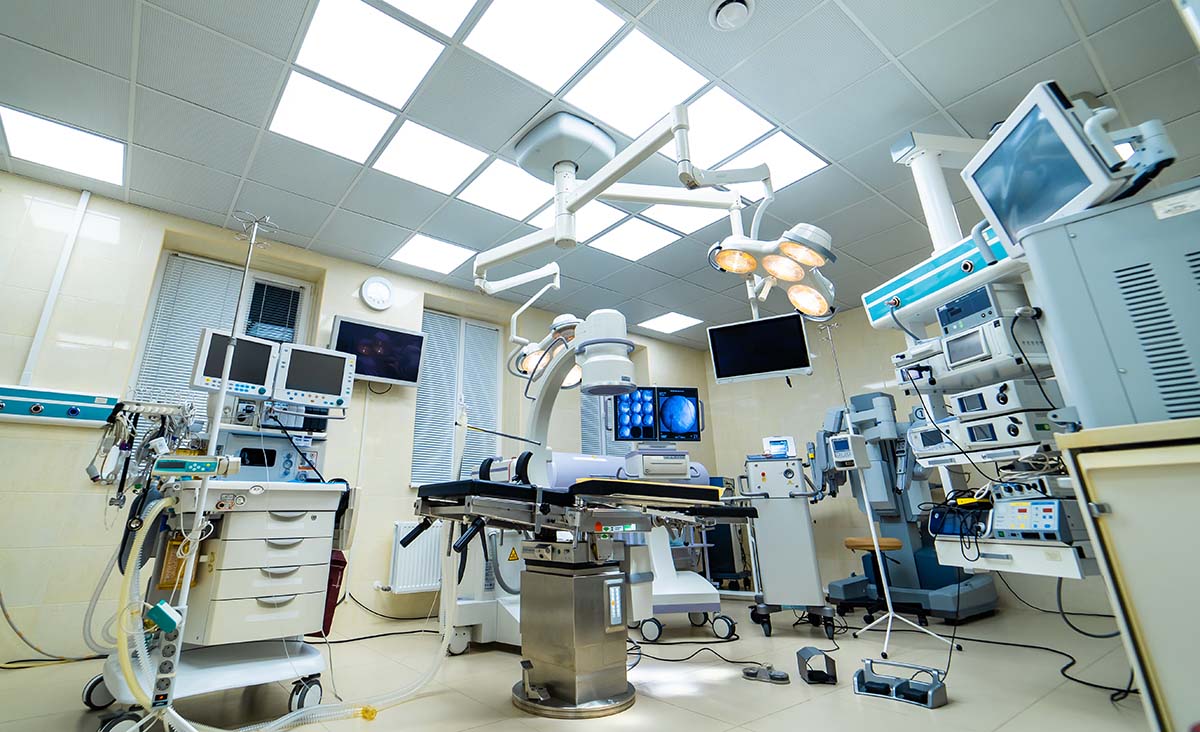Press Release
Better and Safer Care: Johns Hopkins APL Leads Effort to Improve Performance of Medical Device Systems
Medical care today often requires an array of medical devices to capture and communicate the critical patient data necessary for ensuring the best patient outcomes. These devices, however, are largely unable to communicate with one another as interoperable systems, creating a significant source of waste, inefficiency and risk to patient safety.
Addressing this need offers an opportunity for significant care improvement, especially for the next generation of medical technologies.
“It is only in the last few years that the industry began to adopt interoperability standards related to electronic health record system data,” said Jan Rizzuto, a health systems engineer at the Johns Hopkins Applied Physics Laboratory (APL) in Laurel, Maryland. “Interoperability of medical device standards lags even further.” The issue is not lacking standards but implementing them effectively and efficiently, she said.
To address that gap, APL is leading a team of collaborators on the development of a medical device interoperability reference architecture (MDIRA) — a technical framework to guide organizations and industry in developing interoperable, safe, effective and secure integrated medical systems that will deliver the next generation of medical care, in addition to providing a framework for implementing remote and autonomous care where appropriate.
MDIRA builds on the aforementioned standards, which Rizzuto said have existed for more than a decade, by providing requirements and implementation guidance for building safe, secure and effective interoperable systems.
APL is also leading an effort to build a reference implementation of a MDIRA-compliant system to demonstrate proof of concept and foster industry engagement. The reference architecture along with the reference implementation provide a foundation for innovators to understand how to implement these interoperable systems.
Funded by the Defense Health Agency through the U.S. Army Medical Research and Development Command (USAMRDC), MDIRA-compliant systems would allow, for instance, a caregiver to leave a patient’s side to attend to other casualties, perhaps even for extended periods in distant locations.
“The Department of Defense is preparing for future conflicts, potentially against peer or near-peer adversaries,” said Erik Wolf, acting director of USAMRDC’s Medical Simulation and Information Sciences Research Program. “Autonomous medical systems will be critical to providing prolonged care to injured warfighters at the point of injury. The MDIRA architecture will allow different systems to work together and share information, resulting in more capacity and capability to save lives on the battlefield.”
Support for autonomous systems is a key driver for MDIRA. As in future military conflicts, civilian disaster events may also be hampered by limited access and significant casualties, which could overwhelm available medical and evacuation resources. First responders will need autonomous capabilities to sustain patients for prolonged periods until evacuation is possible. A MDIRA-compliant system could enable a single caregiver to monitor the status of multiple patients via a mobile device. Medical robots could even be part of those systems, thereby further reducing the workload of medical personnel.
“Autonomous medical care systems, whether in austere environments — like a combat zone — or in well-equipped hospitals, have the potential to improve care outcomes,” said Steven Griffiths, the project manager for MDIRA at APL, explaining the even broader benefits of the work. “Consistent care improves patient safety by reducing opportunities for errors and communication breakdowns to occur, particularly in repetitive tasks.”
“As in many industries, such as finance, information technology, communications, manufacturing, aerospace, defense and others, the ability of technological systems to seamlessly interface and share data has led to a significant decrease in costs while improving performance,” he continued. “For example, the airline autopilot systems have improved aviation performance. The health care industry could potentially see the same benefit.”
APL is collaborating with a multidisciplinary team that includes the Johns Hopkins Armstrong Institute for Patient Safety and Quality; Massachusetts General Hospital’s Medical Device Interoperability and Cybersecurity Program; DocBox, Inc.; Trusted Solutions Foundry, Inc.; Arcos, Inc.; Dräger and Philips Healthcare.
To meet the project objectives, the APL team and their partners are applying collective expertise in systems engineering, autonomous medical technology, medical device interoperability, medical network communications, clinical decision support, medical data recording and standards development.
In late 2019, the APL team released the “MDIRA Specification Document Version 1.0,” which can be accessed at https://secwww.jhuapl.edu/mdira/ (select “Download Document”). The document provides requirements and implementation guidance for MDIRA-compliant systems focused on trauma and critical care in austere environments and in civilian and military disaster relief settings.
The MDIRA team is currently developing a prototype reference implementation of the MDIRA requirements based on the IEEE 11073 Service-Oriented Device Connectivity (SDC) standards.
“We’re collaborating with medical device manufacturers to integrate a variety of medical devices into the reference ‘medical system’ implementation,” Rizzuto said. “In some cases, we are working with manufacturers that are developing devices with SDC capabilities. In other cases, we are developing communication adaptors, software modules based on the IEEE 11073 standards and MDIRA requirements that will convert data from an existing device into a standard format that can be received and interpreted by other devices.”
“The objective,” she continued, “is to demonstrate the use of MDIRA to advance medical device interoperability and autonomous medical systems, and to motivate manufacturers to implement MDIRA requirements into their devices in the future.”
For more information about MDIRA, or to contribute to MDIRA and medical device interoperability, visit the MDIRA website.
